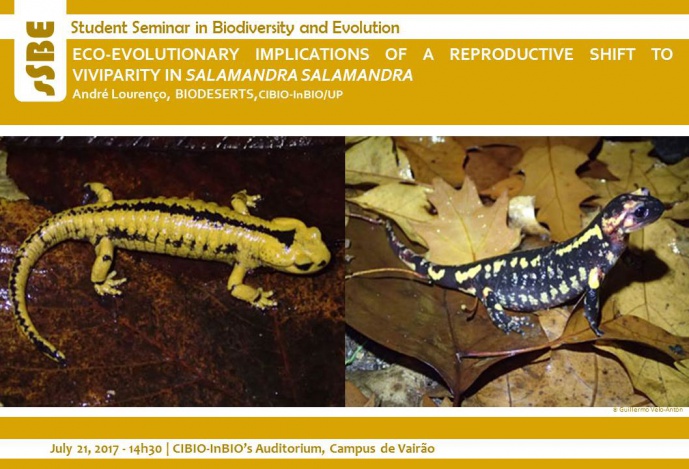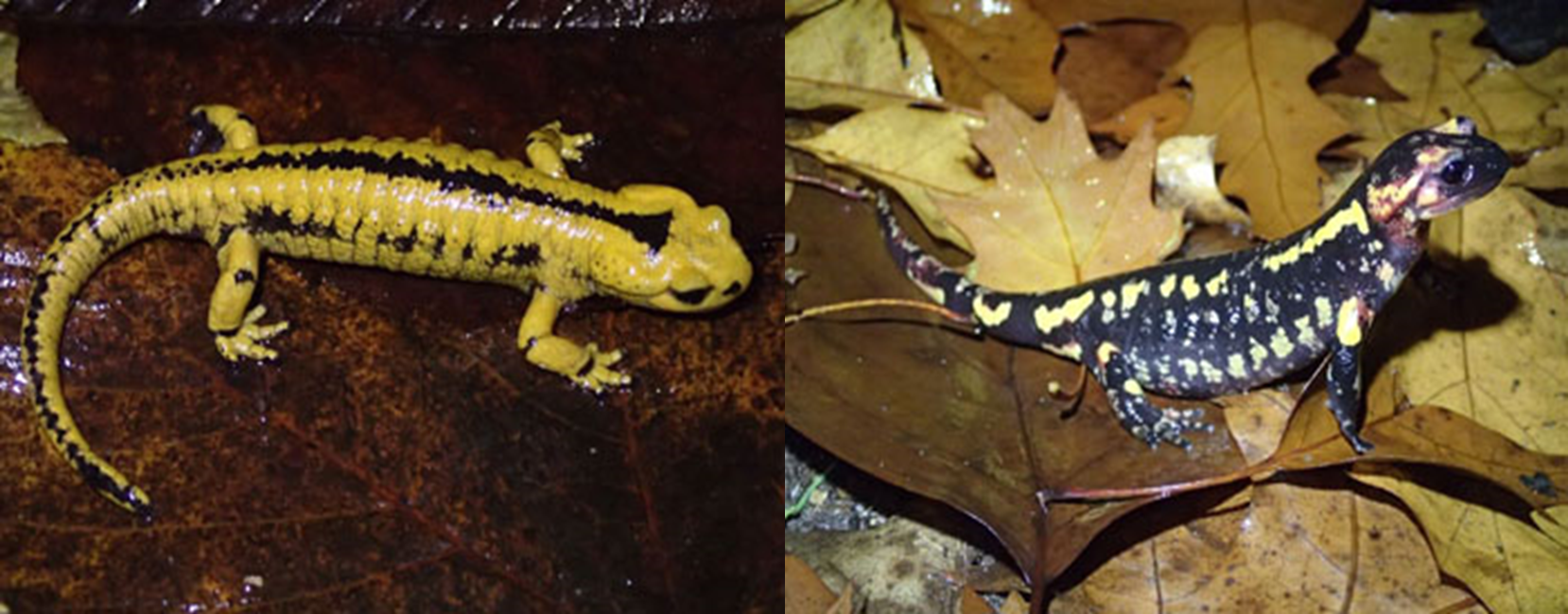ECO-EVOLUTIONARY IMPLICATIONS OF A REPRODUCTIVE SHIFT TO VIVIPARITY IN SALAMANDRA SALAMANDRA

STUDENT SEMINAR IN BIODIVERSITY AND EVOLUTION

Reproductive shifts are driven by strong environmental selective pressures, entailing profound morpho-physiological and likely genetic changes, with key eco-evolutionary implications in population/species dynamics. However, assessing and comparing the ecological and evolutionary implications of reproductive shifts is not straightforward because variability in reproductive modes is usually observed at the interspecific level, where ecological (e.g. different environments) and biological (e.g. intrinsic behavioural differences) factors may confound any comparisons. I am studying the Fire salamander (Salamandra salamandra), a remarkable case of intra-specific variation of reproductive modes, to understand the eco-evolutionary consequences of the development of viviparity in dispersal and patterns of genetic diversity and structure.
André Lourenço holds a MSc in Biodiversity, Genetics and Evolution from the university of Porto. Currently, André is a third-year PhD student in the BIODIV program, being supervised by Guillermo Velo-Antón (CIBIO-InBIO) and Ian J. Wang (UC Berkeley). His interests include the study of the evolution of viviparity and assessment of the demographic history of Northern Iberian populations of Salamandra salamandra.
[Host: Guillermo Velo-Antón, Biodiversity of Deserts and Arid Regions]
Image credits: Guillermo Velo-Antón